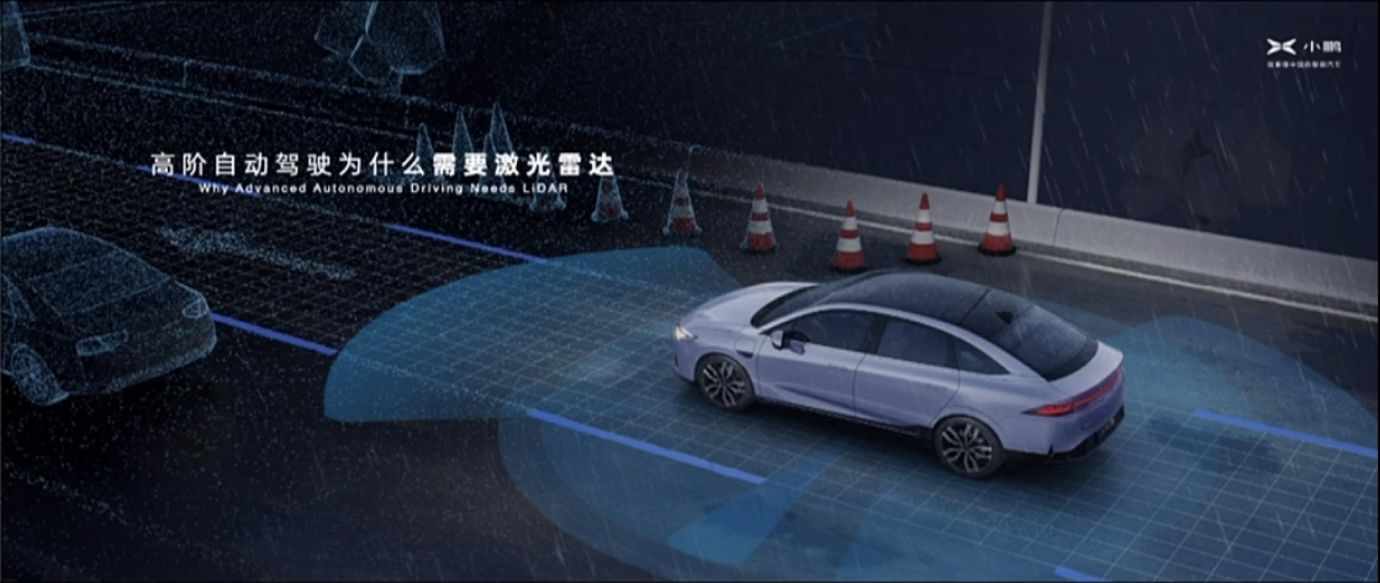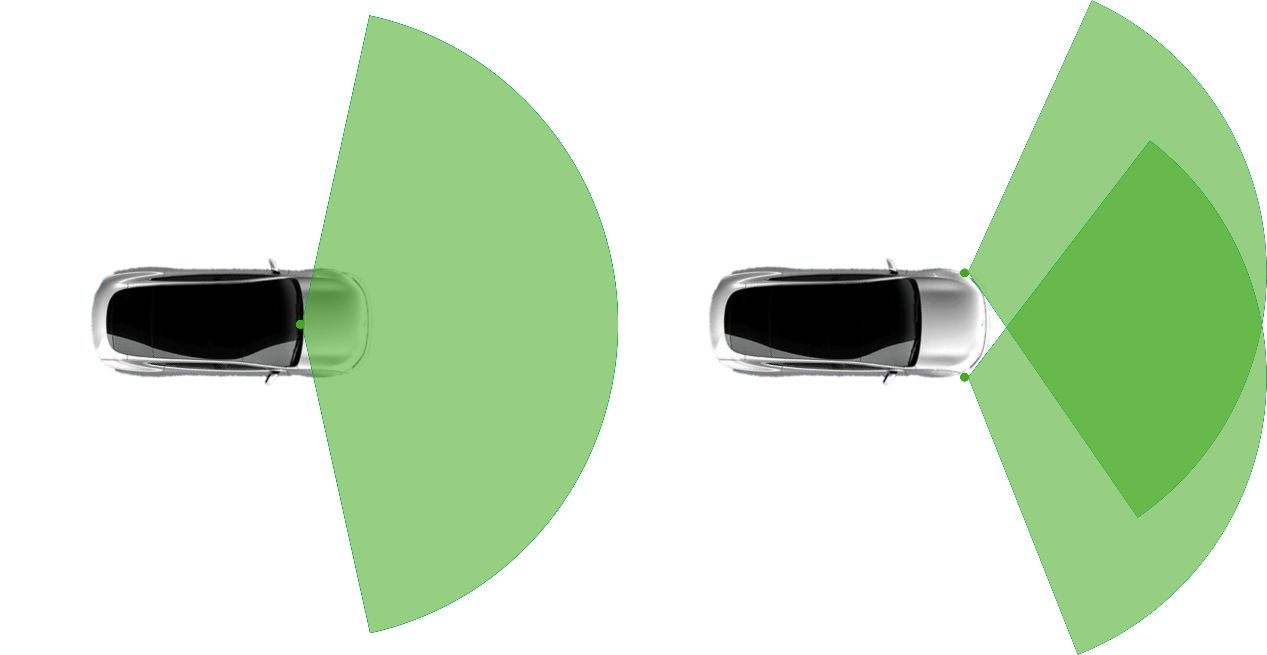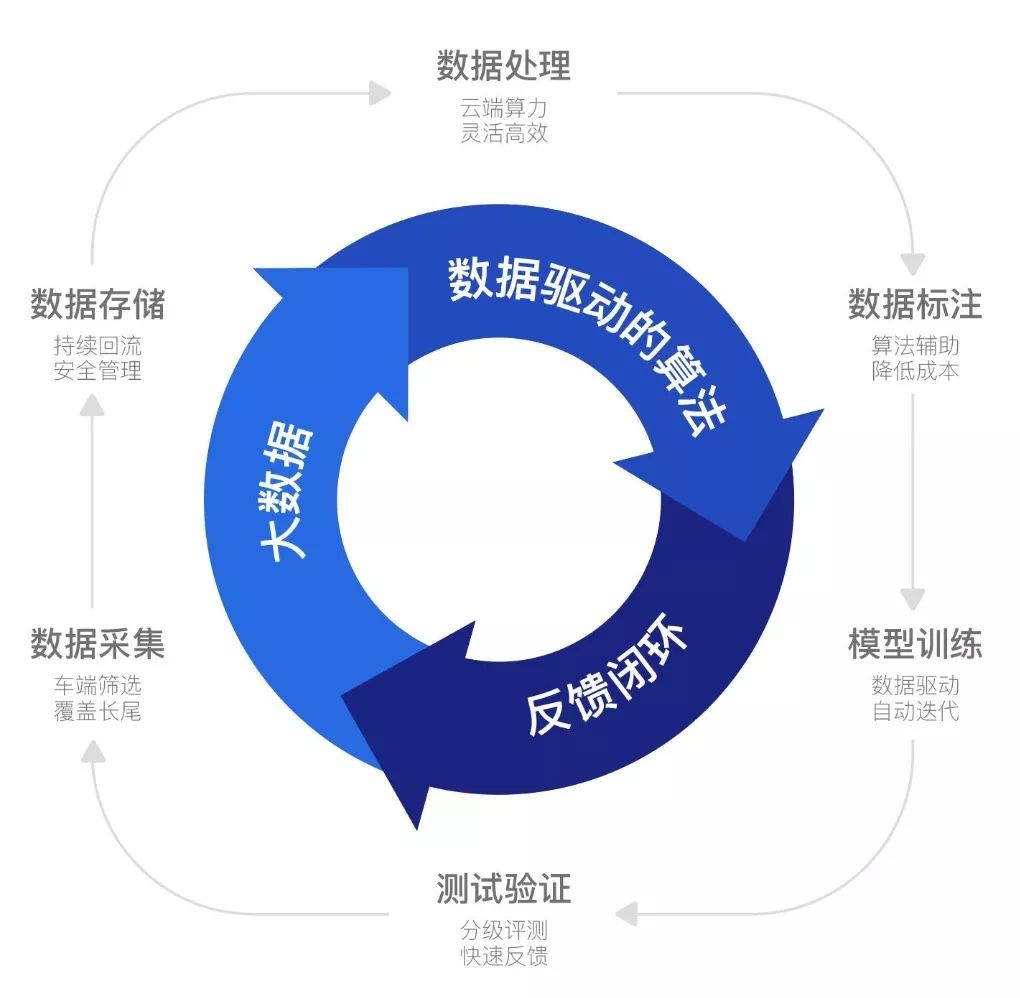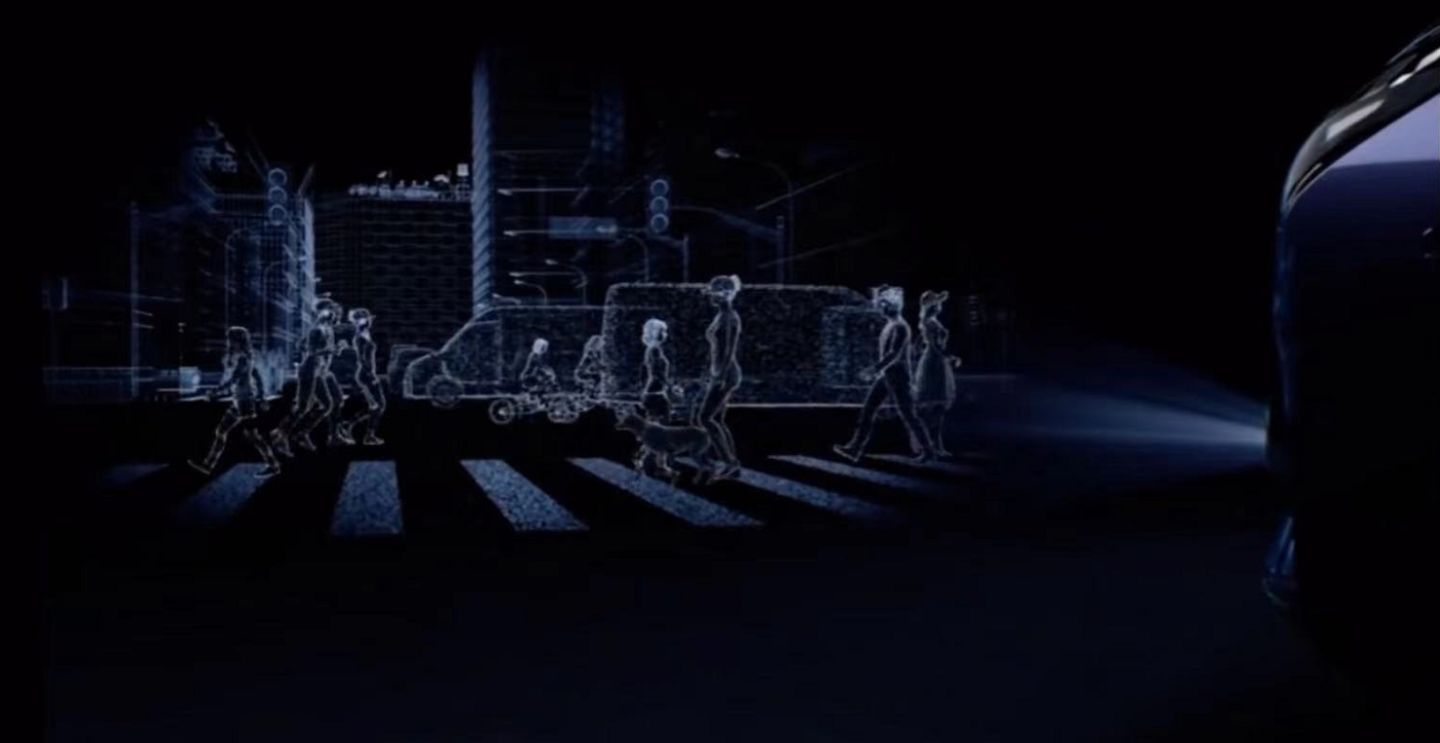Introduction
The NGP (autonomous navigation assistance) function of XPeng P5, in conjunction with XPilot 3.5, has been a fairly explosive news in the automatic driving community since this year. The release of these functions makes XPeng Automobile one of the first companies in China to achieve automatic driving closed-loop scenarios in urban areas, highways, and parking lots. The autonomous driving capability of XPeng P5 theoretically makes the owners’ daily travels fully autonomous.
So what did XPeng P5 rely on to achieve the most difficult urban autonomous driving function in the autonomous driving field? Let’s explore.
XPeng P5 Autonomous Driving Hardware Strength – Luxury Sensor Configuration
The so-called hardware strength is something that can be seen and touched in the XPeng P5 autonomous driving system-sensors.
XPeng P5’s autonomous driving sensor configuration can be completely described as luxurious. It is equipped with 2 lidars, 13 cameras, 5 millimeter-wave radars, 12 ultrasonic sensors, GNSS and IMU, a total of 32 sensors + 1 set of high-precision positioning units. Sensors distributed in various directions enable P5 to have a 360° environmental perception capability.

Among these 32 sensors, the most eye-catching is the lidar. As the most important sensor to achieve urban autonomous driving function, the FOV (Field Of View) of a single lidar can reach 120°, and the farthest detection distance can reach 150 meters. The left and right configuration can more accurately complete the perception of traffic participants ahead and to the front.
Some friends may have noticed that the installation position of XPeng P5’s lidar is different from that of some models that also have lidars installed. These models use a forward-facing single lidar mounted on the roof, and XPeng P5 uses the two-sided lidar installation method. These two methods are essentially not superior to each other and each has its advantages.

The layout of the top lidar can make the detection range higher and farther. Comparatively speaking, I prefer P5’s layout. For urban autonomous driving, the blind spots on both sides of the autonomous car are critical areas, and installing them on both sides of the front of the car can detect key targets on both sides earlier and have a smaller blind spot. In addition, compared with the installation position where the sun can directly shine, the installation position of P5 has better consideration for the working temperature and heat dissipation of the lidar. The lidar works at a suitable temperature, and its service life will be extended.Many automotive manufacturers choose off-the-shelf solutions from Tier 1 suppliers to implement autonomous driving features. Although these solutions can quickly enable vehicles to have specific autonomous driving capabilities in certain scenarios, their functions are mostly fixed after leaving the factory, and there are rarely any upgrades from Tier 1 suppliers. To draw a comparison with smartphones, relying on autonomous driving systems developed by Tier 1 suppliers is a bit like using a non-smartphone that only has the functions it was manufactured with.
XPeng Motors has forsaken the “fast food” style autonomous driving system and opted to build its own software strengths.
The XPeng P5 Full-stack Self-developed Autonomous Driving System
Full-stack Development Promotes Rapid Iteration of Autonomous Driving
The software strengths possessed by XPeng P5 play a critical role in achieving urban autonomous driving, and these software strengths are XPeng’s full-stack self-developed autonomous driving technology.
XPeng’s XPilot has opted for the higher ceiling of full-stack self-development since its first generation. As one of the few full-stack self-developed systems in the world, this system required a huge investment from XPeng. Though the significant effects of this investment might not be apparent in the short term, XPeng has successfully upheld its commitment to full-stack self-development and subsequently demonstrated the feasibility of this system to its competitors with impressive results.
Autonomous driving is a system that requires continuous iteration and improvement. The full-stack self-developed system ensures a closed loop of autonomous driving data, driving the iteration of algorithms with data. The longer the time, the more data accumulated, the stronger the algorithm becomes, realizing a virtuous cycle.

XPeng is a company that strives to perfect its autonomous driving system to the utmost degree. Through long-term data accumulation and algorithm iteration, XPeng’s XPilot driving assistance features, such as high-speed/ring-road assistance and automatic parking, have performed excellently in the industry and served as benchmarks for many competitors.
In March 2021, XPeng organized a 3000 km NGP (Navigation Guided Pilot) expedition based on the P7 model. According to the statistical results of the actual road test, the P7’s success rates for changing lanes and overtaking, entering/exiting highway ramps, and tunnel passage were 94.41%, 92.76%, and 94.95%, respectively. The average takeover frequency was 0.71 times every 100 kilometers, which means that XPeng’s P7 NGP function requires only one takeover every 140 km on high-speed/ring-road driving, a very impressive performance in the industry.Regarding parking, with the release of XPilot 3.5, XPeng P5 will have the function of parking memory in parking lots. With the support of multiple radars (lidar, millimeter wave radar, ultrasonic radar) and cameras, XPilot 3.5 can easily handle complex parking lot scenarios such as incoming and outgoing vehicles, oncoming traffic, pedestrians passing through, and consecutive right-angle turns. The following is the parking memory function of XPilot 3.5.
How does XPeng P5 breakthrough the difficulties of urban autonomous driving?
Compared with the scenarios of highways / ring roads and parking lots, the road conditions of urban roads are more complex.
Autonomous driving vehicles will encounter arbitrary pedestrians, cyclists, unconventional vehicles (cargo tricycles, engineering vehicles), static obstacles (water horses, cones, garbage cans, temporary fences, etc.), small objects on the road surface (triangular warning signs, stones, etc.). In addition to various strange obstacles, scenes with weak light, backlight, and brightness alternation (tunnels) often appear in urban scenarios.

The autonomous driving solution with vision + millimeter wave radar as the main sensor scheme has great safety hazards in these complex scenarios. In order to achieve urban autonomous driving function and achieve full-scene autonomous driving closed loop, XPeng has equipped P5 with lidar.
The multi-sensor redundant scheme of lidar + vision + millimeter wave radar greatly improves the environmental perception ability and safety of urban road conditions. In addition to the original fusion detection method of vision + millimeter wave radar, the method of lidar + vision and lidar + millimeter wave radar can also be further realized, and the redundant detection method can avoid many omissions and improve driving safety.
 The release of the NGP (Next Generation Platform) function in urban areas will enable the Xpeng P5 to have the ability to pass through intersections with traffic lights, including recognition of traffic lights, straight, right and unprotected left turns. It also features the typical scenarios of urban road conditions, such as overtaking capability, customized follow-up capability, automatic speed limit adjustment capability (dynamically adjusted according to the ground/road conditions) and roundabout passing capability.
The release of the NGP (Next Generation Platform) function in urban areas will enable the Xpeng P5 to have the ability to pass through intersections with traffic lights, including recognition of traffic lights, straight, right and unprotected left turns. It also features the typical scenarios of urban road conditions, such as overtaking capability, customized follow-up capability, automatic speed limit adjustment capability (dynamically adjusted according to the ground/road conditions) and roundabout passing capability.
Xpeng P5 – A More Interesting V2X
In addition to the NGP function in urban areas, there’s another feature of the Xpeng P5 that impressed me deeply, which is V2X (Vehicle To Everything).
V2X enables vehicles, basic road infrastructure, pedestrians and other elements to share information such as current status, location and intention through their respective communication devices, thus ensuring that important warning information is timely pushed to all devices connected to the network. At first, I thought that the V2X of the P5 was only used to serve autonomous driving, but then I discovered that it is far more than that. Based on serving autonomous driving, the Xpeng P5 has made more interesting extensions to V2X by transforming the “X” into objects in our daily travel and life.
The first feature is Vehicle To Phone, the Xpeng P5 is equipped with a unique Bluetooth phone key function, with a maximum recognition distance of up to 30 meters, it can achieve automatic unlocking and starting the vehicle when the phone is in close proximity to the car, and automatic locking when the phone is away from the car.
The second feature is Vehicle To Smart-Roof. The Xpeng P5 is equipped with a high-performance solar film on the dark area of the vehicle roof. This feature can achieve intelligent ventilation and charging of the battery under outdoor parking conditions. The working status of the smart roof can be checked in real-time through a smartphone.
The third feature is Vehicle To XiaoMi, which should be the first in China to connect smart in-car network with Xiaomi’s home devices, and complete many furniture interactive functions that can only be achieved on mobile phones while in the car.
Conclusion
From the perspective of an autonomous driving engineer, the Xpeng P5 and XPilot 3.5 release make it possible for mass-produced cars to have autonomous driving capabilities in urban areas, which will be another milestone in the field of autonomous driving in China. With the release of the P5, I believe more and more domestic automakers will realize the importance of LiDAR, and more and more automakers will choose LiDAR to enhance the ability and safety of their autonomous driving functions, and complete the puzzle of urban autonomous driving.
This article is a translation by ChatGPT of a Chinese report from 42HOW. If you have any questions about it, please email bd@42how.com.